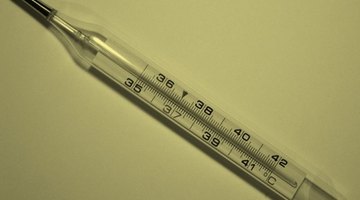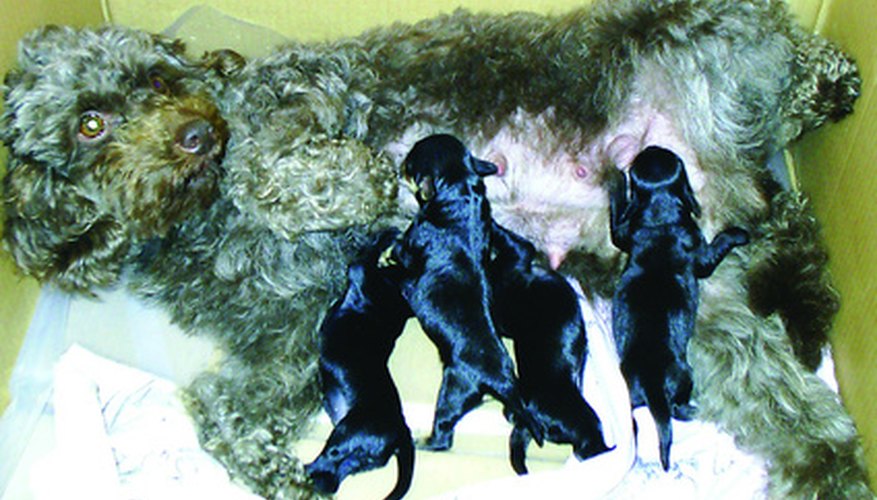Pregnant bitches go through many changes while carrying their pups, from the more obvious swelling of her tummy to signs that she is producing milk and getting ready to give birth. In the latter stages of gestation, which usually last approximately 63 days but can be as short as 58, it can be very difficult to accurately gauge when the litter is due. Recording a bitch's temperature is one good method of establishing good health and the due date.
Showing Signs
A bitch will normally start making a nest--moving around restlessly in circles and scratching the ground--around two days before giving birth, although this can vary. This is the first signal that she is fairly close to giving birth. You should begin taking her temperature in earnest from day 57 or as soon as you see this behaviour.
Temperature Drop
A normal dog's temperature is between 38.3 and 38.8 degrees C, but, due to changes in hormone levels as a bitch is about to give birth, this drops to between 36.1 and 37.2 degrees C. At this stage, you can be pretty sure the puppies will start arriving within 24 hours.
- Pregnant bitches go through many changes while carrying their pups, from the more obvious swelling of her tummy to signs that she is producing milk and getting ready to give birth.
- A normal dog's temperature is between 38.3 and 38.8 degrees C, but, due to changes in hormone levels as a bitch is about to give birth, this drops to between 36.1 and 37.2 degrees C. At this stage, you can be pretty sure the puppies will start arriving within 24 hours.
Thermometers

Rectal thermometers are highly recommended for accuracy but avoid using the glass type if you have a very uneasy or excitable bitch. Different thermometers can give slightly different readings so use the same one when taking readings to maintain consistency and accuracy.
- Rectal thermometers are highly recommended for accuracy but avoid using the glass type if you have a very uneasy or excitable bitch.
- Different thermometers can give slightly different readings so use the same one when taking readings to maintain consistency and accuracy.
Monitoring

Build a brief temperature chart, recording temperature every six hours or so. Take the temperature after your dog has been resting to achieve accurate results. Fill in the data under headings such as "Date," "Time," "Temperature" and "Comments" and monitor her progress carefully.
Rise and Fall
The temperature is likely to rise sharply just before the temperature drop, too, so watch for this in your records as this is a telltale sign that puppies are coming. Guide your dog to use her whelping box at this stage or at least guide her into the room or kennel where this is kept and allow her to get comfortable.
After the Birth

Continue to use your skills with the thermometer to monitor the bitch's general health after the birth, as any abnormalities are generally reflected in a change in temperature. Call your veterinarian if you are concerned by a reading or trend in results.
